One Set - 5 Parameters - Over 250 Tests!
- - 100 pH Tests
- 100 Alkalinity Tests
- 50 Phosphate Tests
- 50 Nitrite/Nitrate Tests
- 50 Ammonium/Ammonia Tests
Being able to make quick and precise water quality assessments is vital and Tropic Marin Compact Lab Essentials Test Kit includes the necessary test kits every professional reefer needs.
Instructions:
pH - Up to 100 Tests
- Shake the dropper bottle before use!
- Rinse out the glass cuvette with tap water and then several times with aquarium water.
- Fill the glass cuvette with exactly 5 ml of aquarium water using the dosing syringe.
- Add 1 drop of pH test reagent, close the glass cuvette using the stopper and briefly shake the solution.
- Place the glass cuvette on the white inner circles of the color card and compare it to the surrounding color fields. To do this, look into the open cuvette from above.
- Read off the measured pH value under the relevant color field.
- Rinse out the glass cuvette and the syringe thoroughly with tap water after the measurement process.
Alkalinity/dKH - Up to 100 Tests
- Shake the dropper bottle before use!
- Rinse out the glass cuvette with tap water and then several times with aquarium water.
- Fill the glass cuvette with exactly 5 ml of aquarium water using the dosing syringe.
- Now add the KH test reagent drop by drop (shake the cuvette after each drop), until the color of the solution changes from TURQUOISE to PINK.
- The number of drops indicates the alkalinity of the solution in dKH, e.g. 8 drops = 8 dKH. To increase the accuracy of the measurement, a 10 ml water sample (instead of 5 ml) can be used. In that case, 1 drop corresponds to 0.5 dKH, i.e. 15 drops = 7.5 dKH.
- Rinse out the glass cuvette and the syringe thoroughly with tap water after the measurement process
Phosphate/PO4 - Up to 50 Tests
- Shake the dropper bottles before use! Assemble and prepare the comparator.
- Rinse out both glass cuvettes with tap water and then several times with aquarium water.
- Fill each glass cuvette with exactly 5 ml of aquarium water using the dosing syringe. Put one of the two water samples aside as a reference.
- Add 10 drops (for saltwater) or 12 drops (for freshwater) of test reagent A to the test cuvette, close the glass cuvette using the stopper and briefly shake the sample.
- After that, add 4 drops of test reagent B, close the glass cuvette once again and briefly shake it.
- After 2 minutes of development time place the open test cuvette and the reference cuvette with the water sample into the comparator. Place the comparator on the color card in such a way that the reference cuvette is sitting on a colored field and the test cuvette on a white field.
- Now compare the opposing fields. To do this, look into the open cuvettes from above. Move the comparator on the color card until both cuvettes match exactly.
- Read off the phosphate concentration under the relevant color field. If the colors do not match exactly, an intermediate value can be estimated.
- Rinse out the glass cuvettes and the syringe thoroughly with tap water after the measurement process.
Nitrite/Nitrate - Up to 50 Tests
Determining the nitrite level:
- Shake the dropper bottles before use!
- Rinse out the glass cuvette with tap water and then several times with aquarium water.
- Fill the glass cuvette with exactly 5 ml of aquarium water using the dosing syringe.
- Add 5 drops of test reagent A, close the glass cuvette using the stopper and briefly shake the solution.
- Add 2 drops of test reagent C, close the glass cuvette once again and briefly shake it.
- After 3 minutes of development time, place the glass cuvette on the white circles of the nitrite color card and compare it to the opposing color fields by daylight conditions. To do this, look into the open cuvette from above. Move the sample on the color card until the cuvette and the color field match exactly. If the colors do not match exactly, an intermediate value can be estimated.
- Read off the measured nitrite value under the relevant color field.
Determining the nitrate level:
- Shake the dropper bottles before use!
- Rinse out the glass cuvette with tap water and then several times with aquarium water.
- Fill the glass cuvette with exactly 5 ml of aquarium water using the dosing syringe.
- Add 10 drops of test reagent A, close the glass cuvette using the stopper and briefly shake the solution.
- Shake the bottle with test reagent B vigorously in a horizontal direction for approx. 30 seconds (the reagent must be well-shaken). Then add 10 drops of test reagent B, close the cuvette again, shake it briefly and set it aside.
- After 3 minutes of development time, add 4 drops of test reagent C, close the glass cuvette once again and briefly shake it.
- After another 3 minutes of development time, open the test cuvette and place it on the white circles of the nitrate color card and compare it to the opposing color fields by daylight conditions. To do this, look into the open cuvette from above. Move the sample on the color card until the cuvette and the color field match exactly. If the colors do not match exactly, an intermediate value can be estimated.
- Read off the measured nitrate value under the relevant color field. Correct the result if necessary.
- Rinse out the glass cuvette and the syringe thoroughly with tap water after the measurement process.
Ammonia - Up to 50 Tests
Determining the total concentration of ammonium/ammonia:
- Shake the dropper bottles before use!
- Rinse out the glass cuvette with tap water and then several times with aquarium water.
- Fill the glass cuvette with exactly 5 ml of aquarium water using the dosing syringe.
- Now add 10 drops of test reagent A to the water sample, close the glass cuvette using the stopper and briefly shake the solution.
- Then add 5 drops of test reagent B to the test cuvette; shake the glass cuvette briefly again and set it aside.
- After approx. 1 minute of development time, add 1 spoonful of test reagent C (powder), shake the glass cuvette briefly and then set it aside.
- After 5 minutes of development time, place the glass cuvette on the white inner circles of the color card and compare it to the surrounding color field. To do this, look into the open cuvette from above. Move the sample on the color card until the cuvette and the color field match exactly. A slight cloudiness in the salt water sample will not affect the result of the test.
- Take note of the measured total concentration value under the relevant color field. If the colors do not match exactly, an intermediate value can be estimated.
- Rinse out the glass cuvette and the measuring spoon thoroughly with tap water after the measurement process.
What's Included?
2x Test Vials
1x Syringe
1x Measuring Spoon
Individual Color Instructions
1x Reagent A Phosphate
1x Reagent B Phosphate
1x Reagent A NO2/NO3
1x Reagent B NO2/NO3
1x Reagent C NO2/NO3
1x Reagent A Ammonia
1x Reagent B Ammonia
1x Reagent C Ammonia
1x Reagent A Alkalinity
1x Reagent A pH

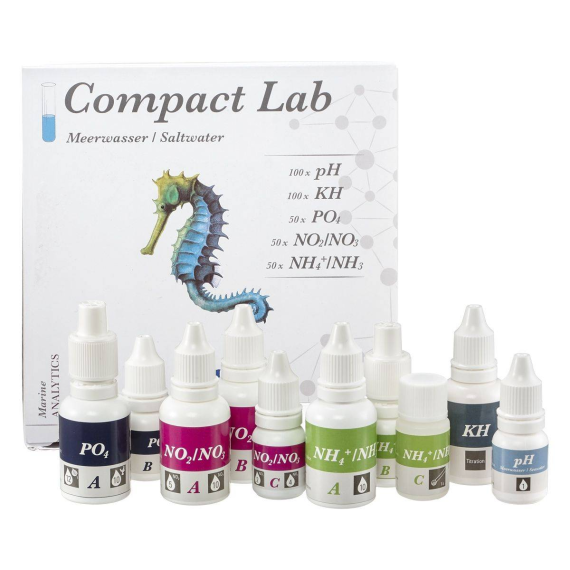















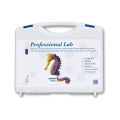
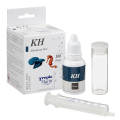



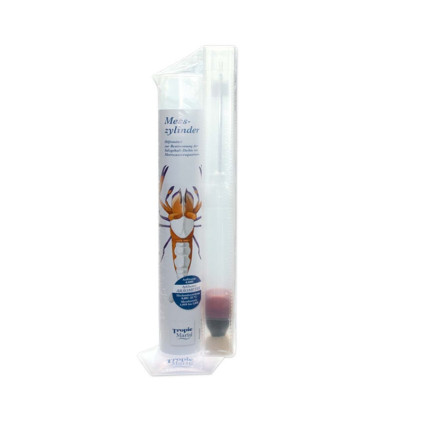
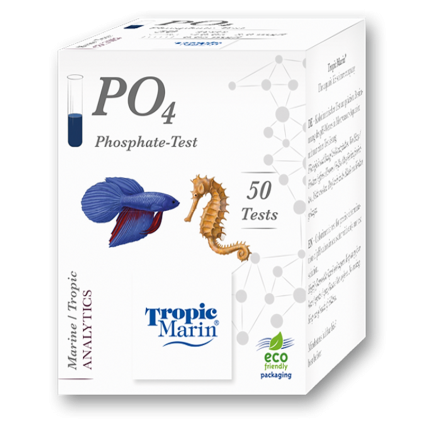
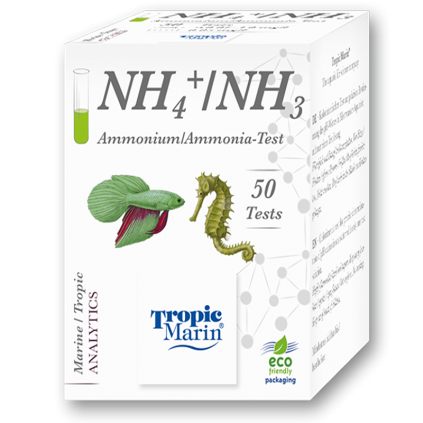

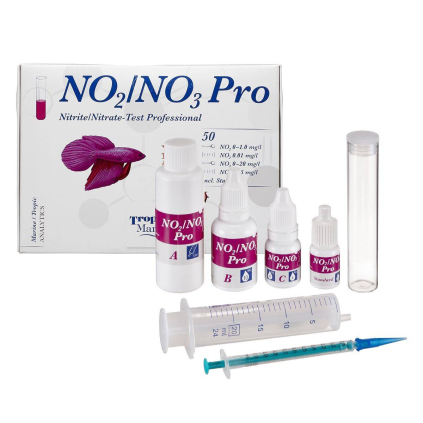


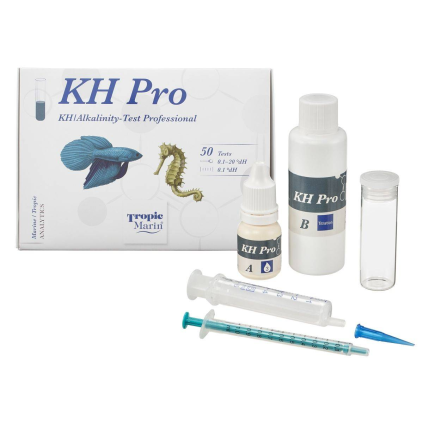
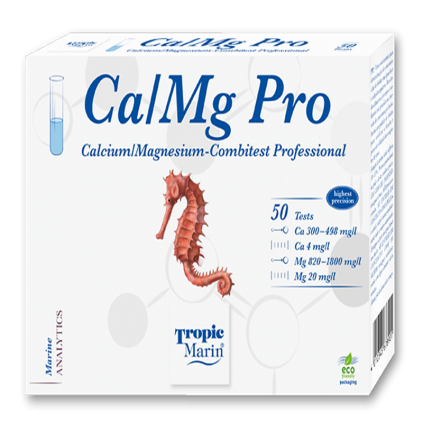
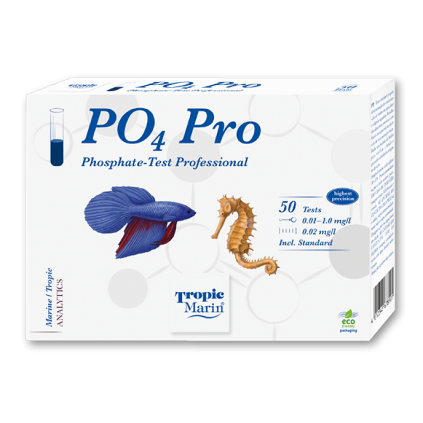


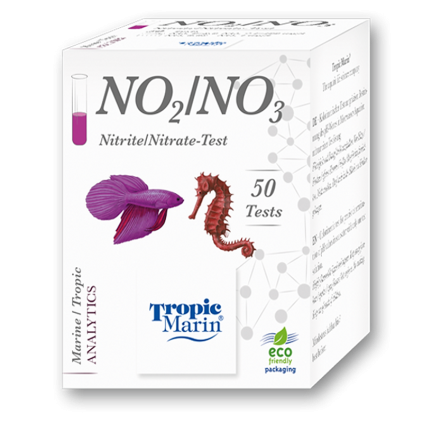
Legg igjen en anmeldelse